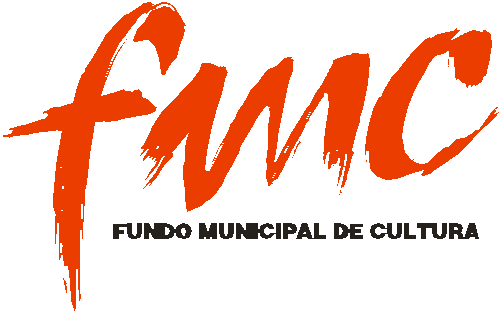in-text citations ================= this document explains and exemplifies appropriate citation and referencing in an academic paper. ex
In-Text Citations
=================
This document explains and exemplifies appropriate citation and
referencing in an academic paper. Examples are taken from Mark Kupets,
“Inferring Mixtures of Markov Chains.” Senior Design Report,
University of Pennsylvania School of Engineering, CIS, April 2005.
Some citation examples are modified.
Appropriate use of another source. In this example, the author weaves
mention of the source into the opening sentence of the paragraph by
stating the names of the authors, the title of the published source,
and date of publication. (A matching entry in the List of References
gives the reader full citation information for the published paper.)
This project is based directly on the work of Batu, Guha, and Kannan
as published in “Inferring Mixtures of Markov Chains” [1]. In that
paper, the authors present algorithms for “inferring Markov chains
from a stream of interleaved behavior”. The authors give results for
various versions of the inference problem, including where the Markov
chains have pairwise-disjoint state sets, in both the simple and
chain-dependent mixture models, and when the Markov chains have
non-disjoint state sets.
Introduction of a paragraph-length paraphrase or quote. When the
author is paraphrasing a long passage from the source, he credits the
source at the beginning. Since he has mentioned the source earlier,
now he can refer to it as “Batu et al.[1].” The form is, First author
et al. [reference number]. Note: the expression et al. is Latin. The
word alia is abbreviated to al. and is followed by a period. It’s
customary to italicize the expression (and doing so will keep
Microsoft Word from interpreting it as the end of a sentence if it is
not).
The following is a description of the problem that this project
addresses as set forth by Batu et al. [1].
Consider a state space of Markov chains …..
Use of material from multiple sources, with credit at the end of the
text. When the focus is on material discussed in many sources, it’s
appropriate to list the sources at the end of the discussion, as in
the following example. Each source is listed by reference number.
A discrete-time Markov chain consists of a set of states and a
transition matrix that specifies the probability of going to some next
state, y, given only the current state x …. [2,3,4].
Choice of verb tense: In most cases, use present tense when referring
to published work. See the first example above. Here is another
example:
Zeboulon, Bennani & Benadbeslem [5] study applying the “’EM’ algorithm
to deduce the initial parameters of a Markov chain mixture model
dealing with navigation sessions on a website….” [This result] is
related to the project, but also deals with one Markov chain, rather
than a mixture of them….
The use of past tense is appropriate if the focus is to give a
historical overview, as in the next example.
Batu, Guha and Kannan [1] defined the problem of “inferring a ‘mixture
of Markov chains’ based on observing a stream of interleaved outputs
from these chains,” and gave algorithms for solving various versions
of the problem.
Quoting versus paraphrasing. Note in the above examples that words
from the cited authors are woven into the text in the form of quotes.
Use discretion when choosing to quote rather than paraphrase. Only
quote if the words you are quoting are uniquely expressive. Avoid
letting the cited authors write your paper. Instead, rephrase general
content into your own words:
Misused quote: While some research has been done in the area of
inferring Markov chains, hidden Markov chains, and other related
areas, “To the best of our knowledge, mixture models of Markov chains
have not been explored” [1].
Paraphrase: Some research has been done in inferring Markov chains,
hidden Markov chains, and other related areas. However, as Batu et al.
point out [1], models mixing types of Markov chains have not been
explored.
The List of References. The List of References at the end of your
paper must contain every work that was cited in the paper, and only
those works cited in the paper. Use the same system in the List of
References that you use to create citations within the paper (that is,
if citations are in ACM style, the list of references should also be
in ACM.)
[1] Batu, T., Guha, S., & Kannan, S. 2004 Inferring Mixtures of Markov
Chains. COLT, (Sept. 2004) 186-199.
http://www.cs.sfu.ca/~batu/personal/papers/mcmix.pdf.
[2] Black, P. E. 2005. Markov Chain. National Institute of Standards
and Technology (Jan. 2005).
[3] Khamsi, M. S. 2005. Markov Chains. S.O.S. Mathematics. (April,
2005)
[4] Weisstein, E. 2005. Markov Chain. MathWorld. Wolfram Research.
(April, 2005)
[5] Zeboulon, A., Bennani, Y., & Benadbeslem, K. 2003. Hybrid
connectionist approach for knowledge discovery from Web navigation
patterns. Book of Abstracts. ACS/IEEE International Conference on
Computer Systems and Applications (14-18 July 2003) ,118.
DOI=http://dx.doi.org/10.1109/AICCSA.2003.1227550
Use of footnotes. A footnote is a note at the bottom of a text page.
The reader sees a superscript numeral in the text of the paper, and
looks at the bottom of the same page for the footnote with that
number. In modern editorial style, footnotes are not used for citation
information. Use footnotes only for comments on the text, or for
adding background or explanatory information.
NOTE: Some guides still refer to citations or references as
‘footnotes’ or ‘endnotes.’ Do not be confused by this usage. Citations
belong in the text of the paper; references belong at the end of the
paper.
For more information and further examples:
ACM Style:
Latex:
http://www.acm.org/sigs/publications/sig-alternate.cls (style file)
http://www.acm.org/sigs/publications/sig-alternate.tex (example file
using the sig-alternate style)
MS Word:
http://www.acm.org/sigs/publications/pubform.doc
 BIOGRAPHICAL SKETCH OF MICHAEL PROSCHAN MICHAEL PROSCHAN HAS BEEN
BIOGRAPHICAL SKETCH OF MICHAEL PROSCHAN MICHAEL PROSCHAN HAS BEEN BRAUNTON PARISH COUNCIL MINUTES OF THE ADDITIONAL MEETING OF
BRAUNTON PARISH COUNCIL MINUTES OF THE ADDITIONAL MEETING OF MAIL SERVICES ORDER FORM DOMESTIC MAIL ONLY 1ST CLASS
MAIL SERVICES ORDER FORM DOMESTIC MAIL ONLY 1ST CLASS PREFEITURA MUNICIPAL DE JOÃO PESSOA SECRETARIA DE EDUCAÇÃO E
PREFEITURA MUNICIPAL DE JOÃO PESSOA SECRETARIA DE EDUCAÇÃO E EN EL BOSQUE AKUTAGAWA AKUTAGAWA EN EL BOSQUE
EN EL BOSQUE AKUTAGAWA AKUTAGAWA EN EL BOSQUE POTVRDENIE ČINNOSTÍ (1) (NARIADENIE (ES) Č 5612006 ALEBO AETR
POTVRDENIE ČINNOSTÍ (1) (NARIADENIE (ES) Č 5612006 ALEBO AETR HISTORY OF SERVICE IN RESPECT OF GAZATTED OFFICERS OF
HISTORY OF SERVICE IN RESPECT OF GAZATTED OFFICERS OF KAPCHORWA DISTRICT LOCAL GOVERNMENT DISASTER CONTINGENCY PLAN FREEFORM 2
KAPCHORWA DISTRICT LOCAL GOVERNMENT DISASTER CONTINGENCY PLAN FREEFORM 2 BỘ TƯ PHÁP VĂN PHÒNG S Ố 1937VPTH VV
BỘ TƯ PHÁP VĂN PHÒNG S Ố 1937VPTH VV